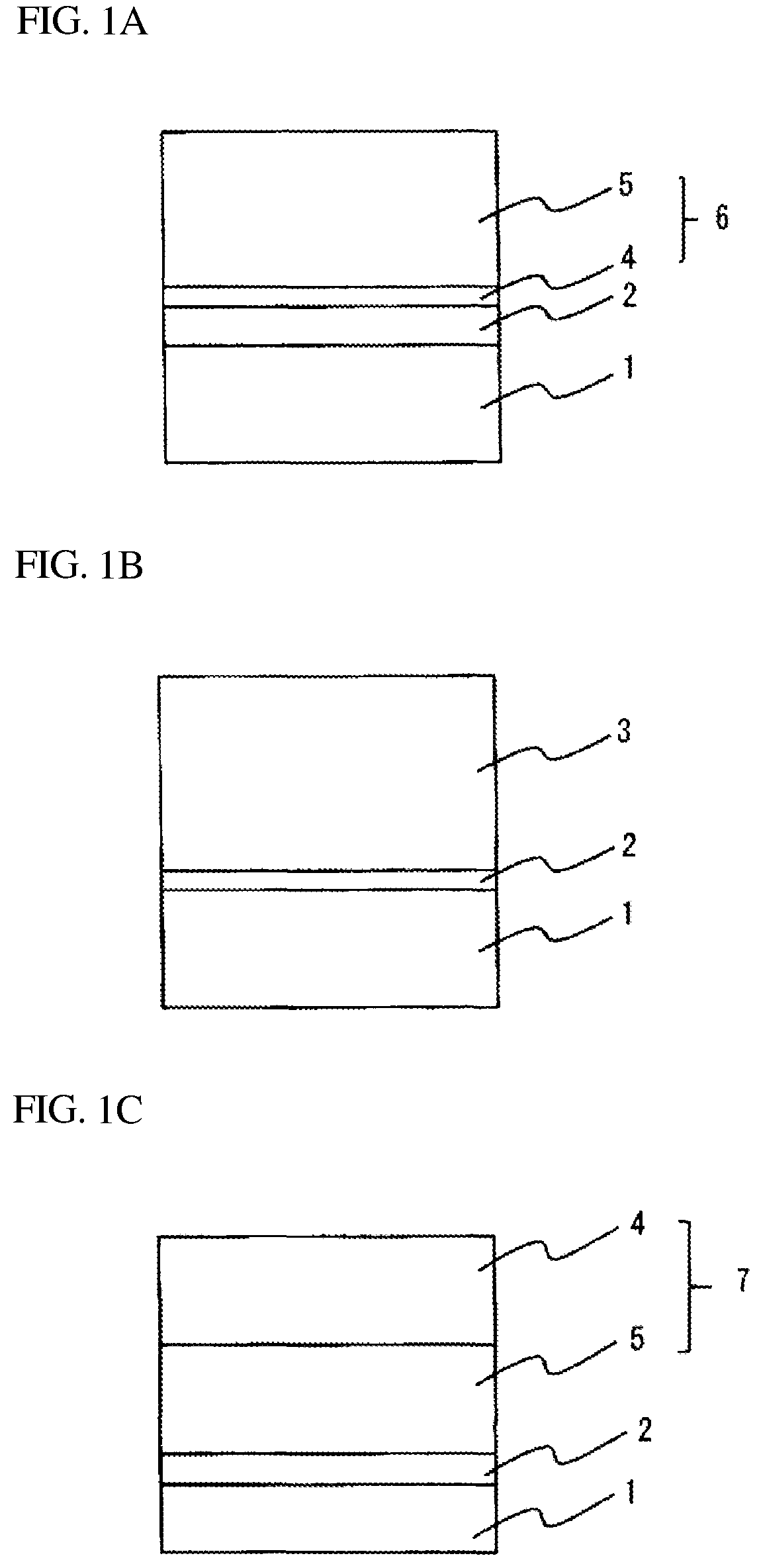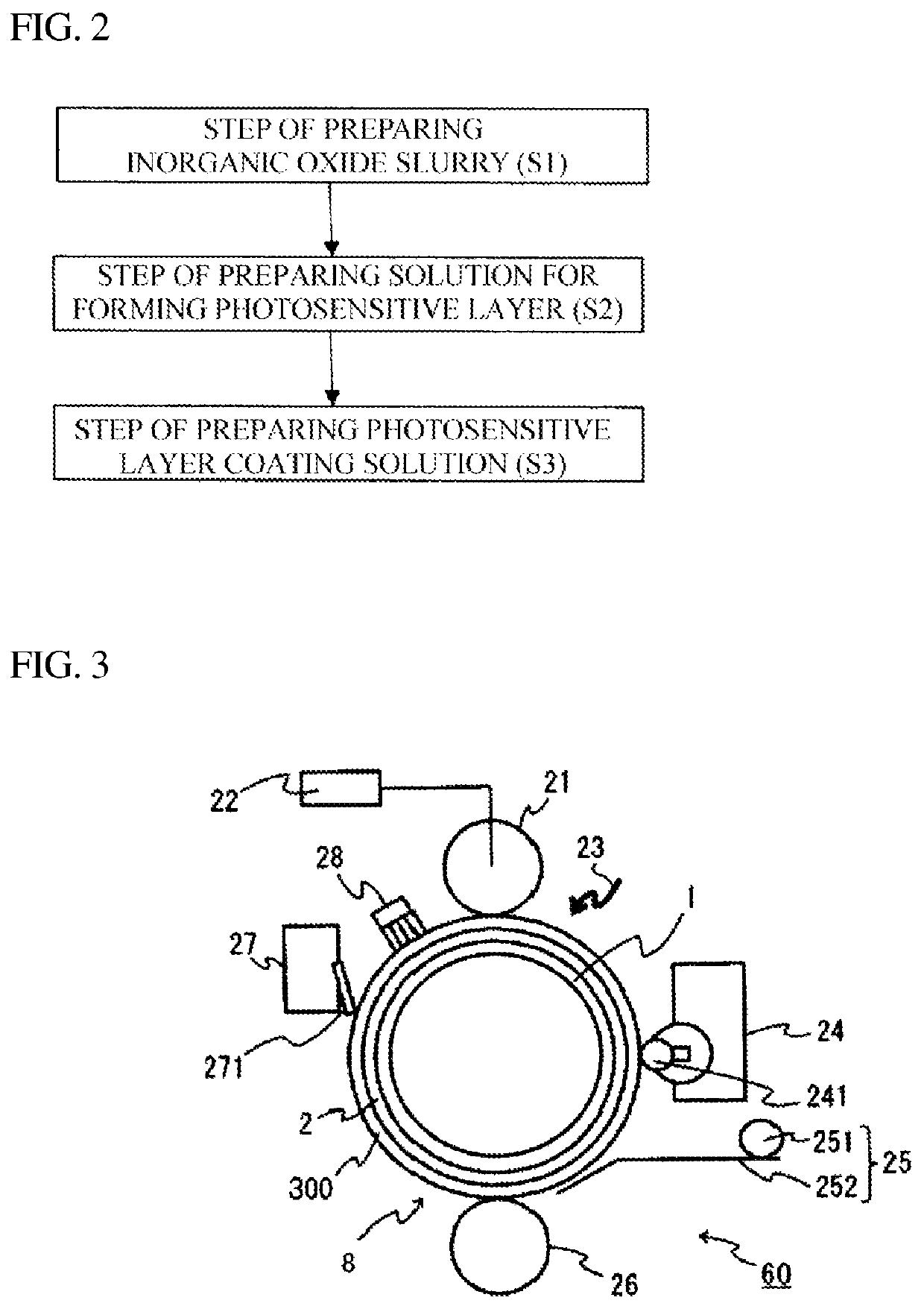Electrophotographic photoreceptor, production method thereof, and electrophotographic apparatus
a photoreceptor and photoreceptor technology, applied in electrographic processes, instruments, coatings, etc., can solve the problems of insufficient removal of toner from the photoreceptor surface, shorten the life of the photoreceptor, and failure of color balance and reproducibility, so as to improve the mechanical strength of the photosensitive layer, reduce the wear amount of the photoreceptor surface, and improve the effect of the mechanical strength
- Summary
- Abstract
- Description
- Claims
- Application Information
AI Technical Summary
Benefits of technology
Problems solved by technology
Method used
Image
Examples
examples
[0156]Hereinafter, specific embodiments of the present invention will be described in more detail using Examples. The present invention is not limited by the following examples unless it exceeds the gist.
[0157]Preparation of Inorganic Oxide Slurry
production examples 1 to 20
[0158]According to production examples listed in Table 2 below, inorganic oxide slurries were prepared. Specifically, each inorganic oxide slurry was obtained by surface-treating each silica manufactured by Admatechs Company Limited, (YA010C (aluminum element content: 500 ppm), YA050C (aluminum element content: 900 ppm), YA100C (aluminum element content: 900 ppm), YA180C (aluminum element content: 900 ppm), and YA400C (aluminum element content: 900 ppm)) as an inorganic oxide using a treatment agent listed in Table 2 as a surface treatment agent to prepare surface-treated silica, and then dispersing the silica (primary dispersion) in tetrahydrofuran (THF) for a photosensitive layer coating solution. The inorganic oxide after surface treatment in Production Example 1 was subjected to the quantitative determination of the amount of the surface treatment agent, and thus the amount was 0.8% by mass with respect to the inorganic oxide after treatment.
[0159]
TABLE 2Inorganic oxideSurface t...
example 1
[0161]A coating solution 1 was prepared by dissolving and dispersing 5 parts by mass of alcohol-soluble nylon (trade name “CM8000” manufactured by Toray Industries, Inc.) and 5 parts by mass of aminosilane-treated titanium oxide fine particles in 90 parts by mass of methanol. The outer periphery of an aluminum cylinder having an outer diameter of 30 mm as the electroconductive substrate was dip-coated with the coating liquid 1, and then the resultant was dried at a temperature of 100° C. for 30 minutes, thereby forming an undercoat layer having a thickness of 3 μm.
[0162]One part by mass of Y-type titanyl phthalocyanine as a charge generation material and 1.5 parts by mass of a polyvinyl butyral resin (trade name “ESREC BM-2” manufactured by Sekisui Chemical Co., Ltd.) as a resin binder were dissolved and dispersed in 60 parts by mass of dichloromethane, thereby preparing a coating solution 2. The undercoat layer was dip-coated with the coating solution 2. After 30 minutes of drying ...
PUM
| Property | Measurement | Unit |
|---|---|---|
| light transmittance | aaaaa | aaaaa |
| viscosity | aaaaa | aaaaa |
| particle diameter | aaaaa | aaaaa |
Abstract
Description
Claims
Application Information
 Login to View More
Login to View More - R&D
- Intellectual Property
- Life Sciences
- Materials
- Tech Scout
- Unparalleled Data Quality
- Higher Quality Content
- 60% Fewer Hallucinations
Browse by: Latest US Patents, China's latest patents, Technical Efficacy Thesaurus, Application Domain, Technology Topic, Popular Technical Reports.
© 2025 PatSnap. All rights reserved.Legal|Privacy policy|Modern Slavery Act Transparency Statement|Sitemap|About US| Contact US: help@patsnap.com



